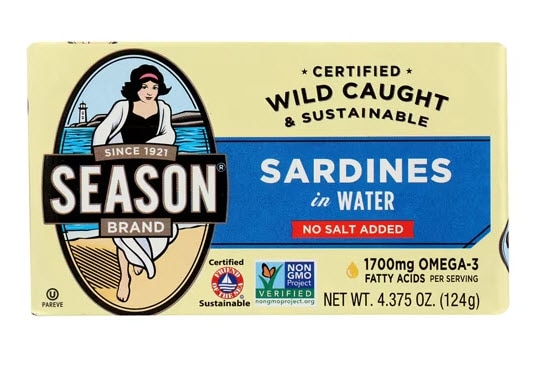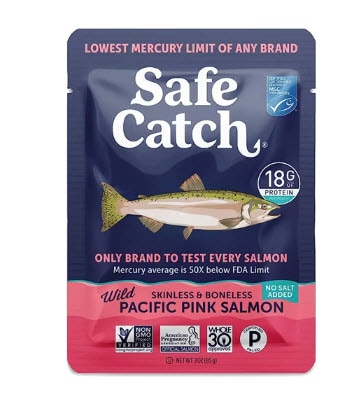Even if you like to go fishing from time to time, many of us don’t personally catch the majority of the seafood we eat. Yet fish is an important part of a nutritious diet, and it’s a staple in many cultures across the world.
So, how does seafood get onto our plates? There are a variety of methods used to catch fish on a large scale, including fishing vessels and aquaculture facilities. Even after it’s caught, seafood goes through several stages of processing, packaging and distribution before it reaches you. Like all aspects of food production, this can take a toll on the environment.
Knowing that the seafood industry exists to feed large populations, it’s natural to wonder just how sustainable it really is. If you try to reduce your carbon footprint as much as possible, here’s what you need to know about the sustainability of your seafood choices.
What is sustainable seafood?
“Sustainable seafood is caught or farmed in a way that protects ocean ecosystems, ensures that fish populations can replenish, and supports fishing communities long-term,” explains Rima Kleiner, RD, a registered dietitian and seafood expert in Greensboro, North Carolina. “It matters because it helps preserve marine life, food security, and livelihoods for future generations.”
The Marine Stewardship Council (MSC), a leading organization in marine sustainability, uses the following to define sustainable seafood:
- Healthy fish populations: Catching fish at a rate that allows the populations to replenish and thrive, rather than overexploiting target species.
- Minimal ecosystem impact: Minimizing bycatch or unintended catch, thereby reducing harm to non-target species and their habitats.
- Effective management: Complying with existing regulations and adapting as new research emerges.
Seafood is an inherently sustainable protein source
You may have heard that eating animal products is bad for the environment. Some animal products, such as beef and pork, take a larger toll than others, but you don’t have to eliminate animal proteins from your diet to live more sustainably. Here’s an idea: Eat more fish to meet your protein needs. Not only is it a healthy option rich in many nutrients—omega-3 fatty acids, B vitamins, selenium, iodine and more—it’s also more environmentally friendly, Kleiner says.
Compared to other protein sources, opting to eat more fish can lower your carbon footprint, according to Seafood Watch. Unlike food sources like beef and pork, seafood doesn’t require farmland. Wild-caught fish require even fewer resources because they also feed and grow on their own.
Because it’s higher in protein, fish may even be more sustainable than relying on some plant-based foods, such as nuts, to get your fill of protein, per scientists at the University of Washington. In fact, the National Oceanic and Atmospheric Administration (NOAA) has deemed seafood the most environmentally efficient source of protein on the planet.
Top types of sustainable seafood (and some to avoid)
Fish is more sustainable than other types of animal proteins, but how do different types of fish compare to each other? Complex factors—including methods and equipment used to catch fish, the healthiness of targeted fish populations and more—can influence how sustainable (or unsustainable) a certain type of fish actually is. Here’s your shortcut to the most sustainable seafood at the supermarket.
According to Seafood Watch, here are some types of seafood that pose the lowest environmental risks (aptly named “Best Choice” seafood):
- Pacific or Alaskan Cod
- S. Shrimp
- Albacore Tuna
- Skipjack Tuna
- New Zealand Salmon
- Farmed Mussels, Clams, and Oysters
- Alaskan King Crab
The following are also some sound options:
- Tilapia
- S. Snapper
- Atlantic Salmon
- Sardines
- S. Mahi Mahi
- Atlantic Cod
- Scallops
Fish with larger carbon footprints
If you want to use your purchasing power to support sustainable seafood, here are some types of seafood known to be less sustainable:
- Imported Shrimp
- S. and Canadian Lobster
- Bluefin Tuna
- Chilean Seabass
- Farmed Salmon (Canada, Chile, Norway, or Scotland)
- Atlantic Cod
- Octopus
- Eel
Sustainable seafood in the United States
Seafood is transported all over the world, so even if you live in one country, the fish on your plate may have come from elsewhere. How’s the United States doing in terms of sustainable seafood?
According to the NOAA, fisheries in the United States are required to adhere to a system of enforced environmentally responsible practices. This includes laws that prevent overfishing, conserve essential fish habitats, minimize interactions with protected species and more.
Data suggests that the United States is leading the way for sustainable seafood. Globally, 69% of fisheries are currently sustainable, providing 82% of consumed seafood. In the United States, however, 95% of fisheries are sustainable and provide over 99% of consumed seafood.
Generally speaking, seafood from the United States is likely to be sustainable, but there are also sustainable imported options.
Identifying sustainable seafood when grocery shopping
If you’re shopping for the types of sustainable seafood listed above (i.e. skipjack tuna, sardines, etc.), then you’re probably already on the right path. Here’s what else to look for to make more sustainable seafood choices.
Terms like “eco-friendly” and “responsible” aren’t always enough to know whether you’re dealing with sustainably sourced fish. Oceanic Society recommends looking for reliable third-party certifications, such as:
- Monterey Bay Aquarium Seafood Watch
- Marine Stewardship Council (MSC)
- Best Aquaculture Practices (BAP)
- Friend of the Sea (FOS)
Take a look at Safe Catch Wild Pacific Pink Salmon, for example. It’s certified as a sustainable option by the MSC. Additionally, Season Sardines are certified by the FOS.
Other labels that are helpful to know include “pole-&-line caught.” This reduces unwanted bycatch. For example, Wild Planet SkipJack Wild Can Tuna is sustainably caught using a pole and line rather than large nets that could scoop up endangered species or damage marine habitats.
There are lots of reasons to eat more fish, Kleiner says, emphasizing that many people actually aren’t eating enough of it. So, let this be your sign to eat more fish. It’s good for you, and it’s one of the better options for the planet too.
Featured Products



The post Sustainable Seafood: Why it Matters & How it Works (Plus, Brands to Support at Vitacost) first appeared on The Upside by Vitacost.com.


